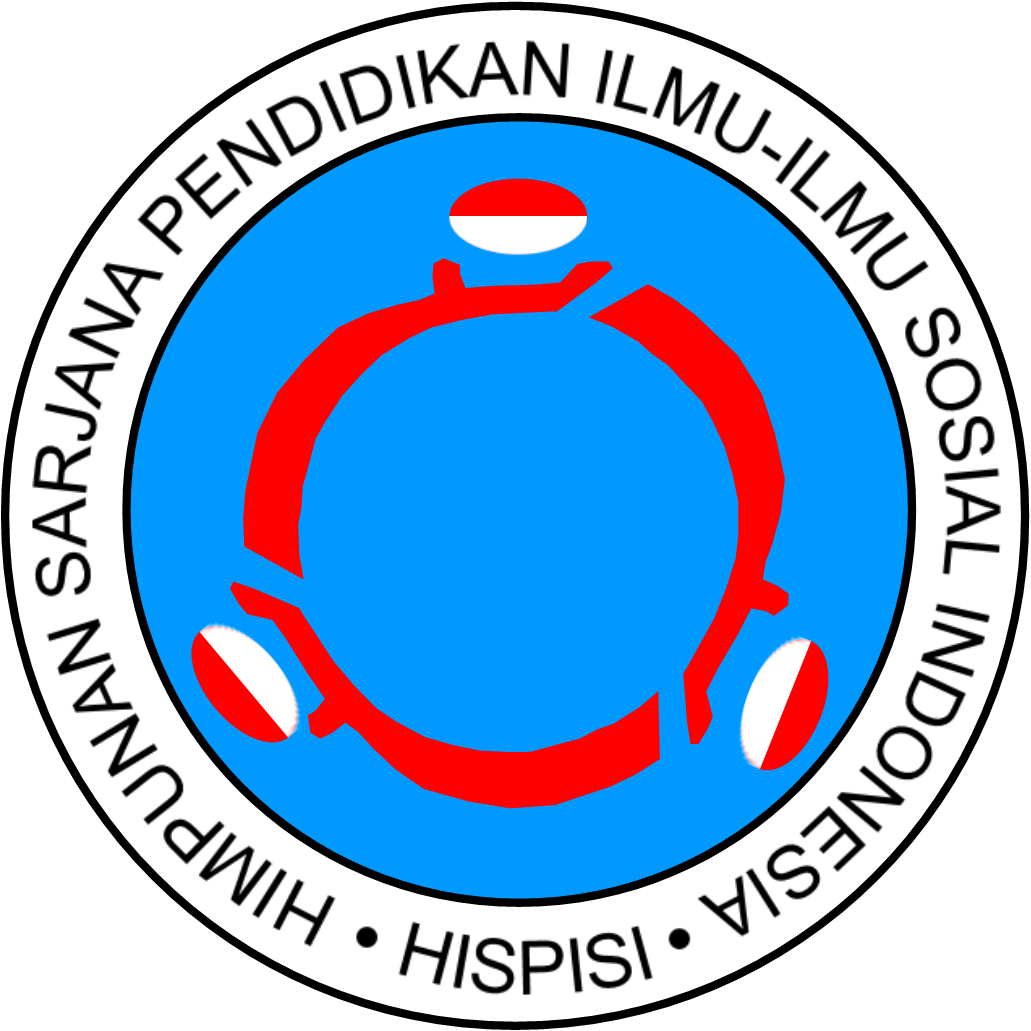A Quantitative Approach to Challenges Facing Online and Physical Classes in Social Studies Learning Higher Education
Abstract
Keywords
Full Text:
PDFReferences
Adrian, L. M. (2010). Active learning in large classes: Can small interventions produce greater results than are statistically predictable? The Journal of General Education, 59(4), 223-237. 2.
Ajayi, I.A (2009). Achieving universal basic education in Nigeria: strategies for improved funding and cost effectiveness. The Social Science, 2(3),342-345.
Al Nashash, H., & Gunn, C. (2013). Lecture capture in engineering classes: Bridging gaps and enhancing learning. Educational Technology & Society, 16(1), 69-78.
Allen, I.E. and J. Seaman (2014). Grade Change: Tracking Online Education in the United States. Babson Park, MA: Babson Survey Research Group.
Babalola, E. O., Onasanya, S. A. (2024). Influence of Online and Physical Classrooms on Students Academic Performance. Indonesian Journal of Multidisciplinary Research, 4(1), 27-40
Bolgatz, J. (2005). Revolutionary talk: Elementary teacher and students discuss race in a social studies class. The Social Studies, 96(6), 259-264.
Brookhart, S. M., & Durkin, D. T. (2003). Classroom assessment, student motivation, and achievement in high school social studies classes. Applied Measurement in Education, 16(1), 27-54.
Bridget Manley (2018) 5 common challenges you should never ignore.www.blog.youragora.com
Chambers, Fiona, and Rachel Sandford. 2019. ““Learning to Be Human in a Digital World: A Model of Values Fluency Education for Physical Education.” Sport, Education and Society 24 (9): 925–938. doi:10.1080/13573322.2018.1515071.
Coman, C., Tîru, L. G., Schmitz, L. M., Stanciu, C., & Bularca, M. C. (2020). Online Teaching and Learning in Higher Education during the Coronavirus Pandemic: Students‟ Perspective. Sustaniability, 4-24.
Dhawan, S. (2020). Online learning: A Panacea in the Time of COVID-19 Crisis. Journal of Educational Technology Systems 49(1) 85-115
Donahue, N., & Glodstein, S. (2013). Mentoring the needs of nontraditional students. Teaching and Learning in Nursing, 8(1), 2-3. http://dx.doi.org/10.1016/j.teln.2012.07.003
Folley, D. (2010). The lecture is dead long live the e-lecture. Electronic Journal of e-Learning, 8(2), 93-100.
Gambari, A. I., & Yusuf, M. O. (2017). Relative Effectiveness of Computer-Supported Jigsaw II, STAD and TAI Cooperative Learning Strategies On Performance, Attitude, And Retention of Secondary School Students in Physics. Journal of Peer Learning, 10(1), 76–94.
Gherheș, V., Stoian, C. E., Fărcașiu, M. A., & Stanici, M. (2021). E-Learning vs. Face-To-Face Learning: Analyzing Students’ Preferences and Behaviors. Sustainability, 13(8), 43-8.
Guo, J., Zhu, R., Zhao, Q., Li, M., & Zhang, S. (2020). Adoption of the Online Platforms Rain Classroom and WeChat for Teaching Organic Chemistry during COVID-19.
Hooman E. (2016) Fordham University. An Exploratory Study of the Effects of Online Course Efficiency Perceptions on Student Evaluation of Teaching (SET) Measures
Jaques, D., & Salmon, G. (2007). Learning in groups: A handbook for face-to-face and online environments. Abingdon, UK: Routledge.
Jennifer Mathes, Ph. D., Chief Executive Officer, Online Learning Consortium April 13, 2020. AS Defining Moment for Online Learning.
Joseph Yawson (2020), Covid-19 and E-learning: the challenges of students in tertiary institutions Retrieved from online: https://doi.org/10.37256/ser.212021422
Kapasia, P. N., Paul, A. Roy, J. Saha, A. Zaveri, R. Mallick, B. Barman, P. Das, P. Chouhan Impact of Lockdown on Learning Status of Undergraduate and Postgraduate Students During COVID-19 pandemic in West Bengal, India Children and Youth Services Review (2020), p. 116
Kaur, N., Dwivedi, D., Arora, J., & Gandhi, A. (2020). Study of the Effectiveness of E-Learning to Conventional Teaching in Medical Undergraduates Amid COVID-19 Pandemic. National Journal of Physiology, Pharmacy and Pharmacology, 10(7), 563–567.
Kirkwood, A., & Price, L. (2014). Technology-enhanced learning and teaching in higher education: What is ‘enhanced’ and how do we know? A critical literature review. Learning, Media and Technology, 39(1), 6–36. doi:10.1080/17439884.2013.770404
Kirk, David. 2020. Precarity, Critical Pedagogy and Physical Education. Abingdon, Oxon; New York, NY: Routledge.
Monks, J., & Schmidt, R. M (2011). The impact of class size on outcomes in higher education. The BE Journal of Economic Analysis and Policy, 11(1), 1-17.
Morgan, K. (2016). Compare and Contrast Online vs. Classroom instruction
Onasanya, S. A.,Nathaniel S., Sofoluwe A. O., &Onasanya T. O. (2014) Influence of Internet Surfing on Senior School Students’ Acquisition of Hidden Curriculum in Nigeria. Bingham Journal of Social and management Studies3, (1)758-768.
Onasanya, T. O; Attah, J. Ojoma; Otemuyiwa, B. I; & Onasanya, S. A. (2021): Impact of the ClassMarker App on the Performance of Undergraduates in Online Learning of ICT: The University of Ilorin Experience. West African Journal of Open & Flexible Learning 9(2) 55-74.
Onasanya S. A., Yahya S. O., Akingbemisilu A. A. & Ayelaagbe S. O. (2013): Online Social Networking and the Academic Achievement of University Students: The Experience of Selected Nigerian Universities. Journal of Information and Knowledge Management. Official Publication of International Institute of Science, Technology and Education (IISTE)Hong Kong 3 (5), 109-116
Patricia Ananga and Isaac Kofi Biney (2017), Comparing face-to-face and online teaching and learning in higher education. MIER Journal of Educational Studies, Trends & Practices. 7(2), 165-179.
Rich, Emma, and Andy Miah. 2017. “Mobile, Wearable and Ingestible Health Technologies: Towards a Critical Research Agenda.” Health Sociology. 26(1), 84-97. doi:10.1080/14461242.2016.1211486.
Salcedo, C. S. (2010). Comparative Analysis of Learning Outcomes in Face-To-Face Foreign Language Classes Vs. Language Lab and Online. J. Coll. Teach. Learn. 7, 43–54. doi: 10.19030/tlc.v7i2.88
Sywelem, M., Al-Harbi, Q., Fathema, N., & Witte, J. (2012). Learning Style Preferences of Student Teachers: A Cross-cultural Perspective. Institute for Learning Styles Journal, 1, 10-24.
Wellington, R. J. O., & Clarence, A. U. (2021). Benefits of E-Learning Method as A Pedagogical Technique for Secondary School Education in Nigeria in The Face of Covid-19 Pandemic. Journal of Educational Planning and Administration, 6, 93-103
Yakubu, M. N., & Dasuki, S. I. (2020). Adoption of E-Learning Technologies Among Higher Education Students in Nigeria. Education and Information Technologies, 2(1), 12–18.
DOI: https://doi.org/10.17509/jpis.v31i1.63318
Refbacks
- There are currently no refbacks.
Copyright (c) 2023 Universitas Pendidikan Indonesia (UPI)

This work is licensed under a Creative Commons Attribution-ShareAlike 4.0 International License.














